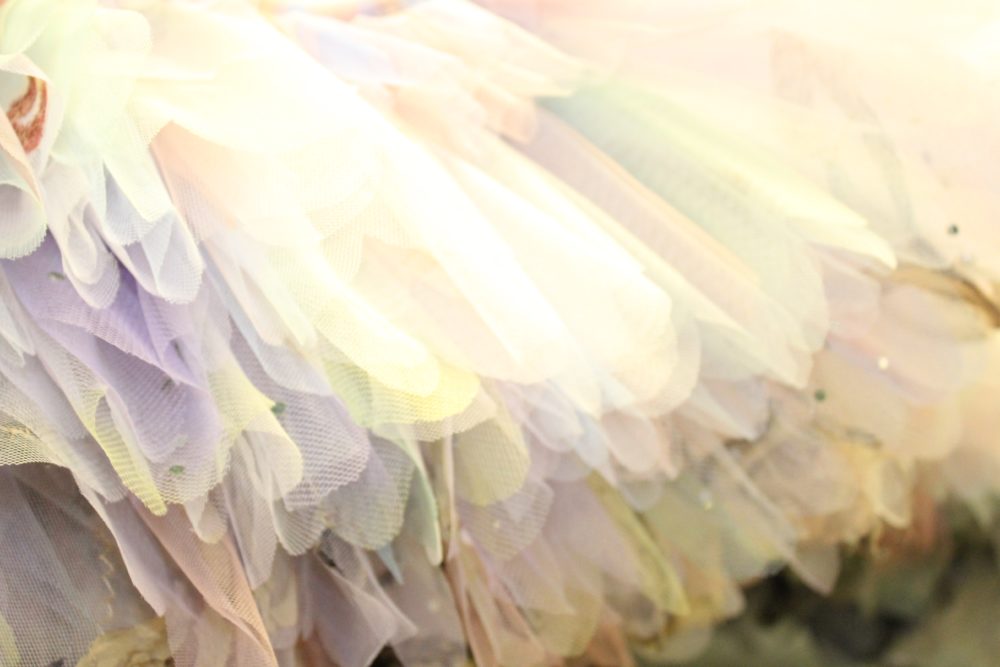Miami City Ballet is capping off it’s 30th anniversary celebration with a reinterpretation of George Balanchine’s A Midsummer Night’s Dream. But there’s a twist as Shakespeare’s forest has been transposed to the sea, giving the production a subtropical mystique.
Michelle Oka Doner, a renowned international artist whose work often centres around nature, was asked by Miami City Ballet’s artistic director Lourdes Lopez to design the sets and costumes for the new production.
Diane Dunbar spoke with Michelle while she was in Miami preparing for her exhibition How I Caught a Swallow in Midair at the Pérez Art Museum Miami.
Many artists have been drawn to the ballet – Degas with his paintings; Picasso and the Ballets Russes. What do you think it is about ballet that draws in artists?
Ballet is a contained world; the stage allows us to filter out the reality of other sounds, stimulations and visual static and create something close to a projected ideal. It’s a vision that we humans can do, given the fact that we are kind of relatively minuscule in terms of the greater universe. So, it’s that one moment; and if people are lucky, work hard and have ideas, it’s an “aha” moment.

Is this your first collaboration with a ballet company?
Yes. Lourdes Lopez has been wanting to take George Balanchine’s A Midsummer Night’s Dream and look at it with fresh eyes so that a new generation, a new audience, can appreciate it and love it the way she loves it.
I think it was very courageous to take it on. It’s daunting; it has a lot of costumes, a lot of movement, and a lot of confusion, as she says. She didn’t pick a simple Balanchine work to revamp.
She picked probably one of his most complex and long ballets. She then searched for somebody to bring the visual components to it. She felt perhaps that even though my work has other aspects to it, there is a classical undertone, as well as a primal tone. I think both of those struck two notes that were relevant, the classical and the primal.

What was the experience like, working with Miami City Ballet to reimagine Balanchine’s work?
It was quite a wonderful journey; it opened many, many doors. I had been to the ballet but I never studied it. I have come to really respect, so much more, the structure and the history of it. It was an immersion for me, and a world that was quite beautiful and held a level of, I would say, emotional value that is particularly wonderful in this day of irony.
How did you approach this project – did you attend rehearsals? Listen to the music? Balanchine is said to have been very influenced by the music.
I knew the Mendelssohn incidental music, that was a springboard – the music, the singing, it’s exquisite. I understood that the visual components of the ballet needed to be strengthened and I wanted to take that leap, to be up in the air like the dancers; instead, I went underwater.

I thought, “this is Miami City Ballet” it’s a city with a new self-awareness, a new consciousness of itself as a cultural centre. We’ve had Miami Vice, Cocaine Cowboys and Scarface. It’s time we had something respectable that we feel very good about and that can represent Miami through a different lens.
So, I set it in Miami. I replaced the palace in Athens in the second act with our own Coral Castle [ A home and garden made completely of Florida coral limestone and built from 1923- 1951].

The first act is underwater and the opening scene is a photograph, taken by the University of Miami, under the port of Miami. It’s a Miami moment. I am so proud for Miami and for Miami City Ballet, happy to have that to offer to Balanchine. It’s like offering him, on a platter, a palm frond.
Could you tell us about your inspiration for the design of the costumes and sets?
I had the privilege of visiting the Marine Invertebrate Museum [at the University of Miami]. There is a book that has just been published, Into the Mysterium (by Michele Oka Doner) which has almost 80 illustrations that came from the wonderful collection that’s there. That is what Miami has underwater that none of us see; that has been the inspiration for the costumes.

Paloma Picasso said that “inspiration always begin with opening yourself up to your environment – focusing on things that appeal to you.” What did you focus on for inspiration in completing this project?
I returned [to the Marine Invertebrate Museum] with a camera and spent a week there. I was amazed at the world unfolding in front of me. When Lourdes approached me and we spoke about what to do, how to enhance – how to give this ballet a new license in the visual world. I really understood. I said,
“I have something. I have a whole resource I can put at our discretionary use. And it’s real.”
To take something out of reality and transform it into magic, to take something that’s visceral and literal and to transform it into something that has a life of its own, is really what ballet is about.
You are taking the body, which is visceral and not ephemeral, and you are asking the body to create a moment. That is the ephemeral. Coming back full circle, all of this has to do with the ability of the imagination – to be what allows the soul to open, the mind to soar.
For more about: Miami City Ballet’s A Midsummer’s Night Dream.







